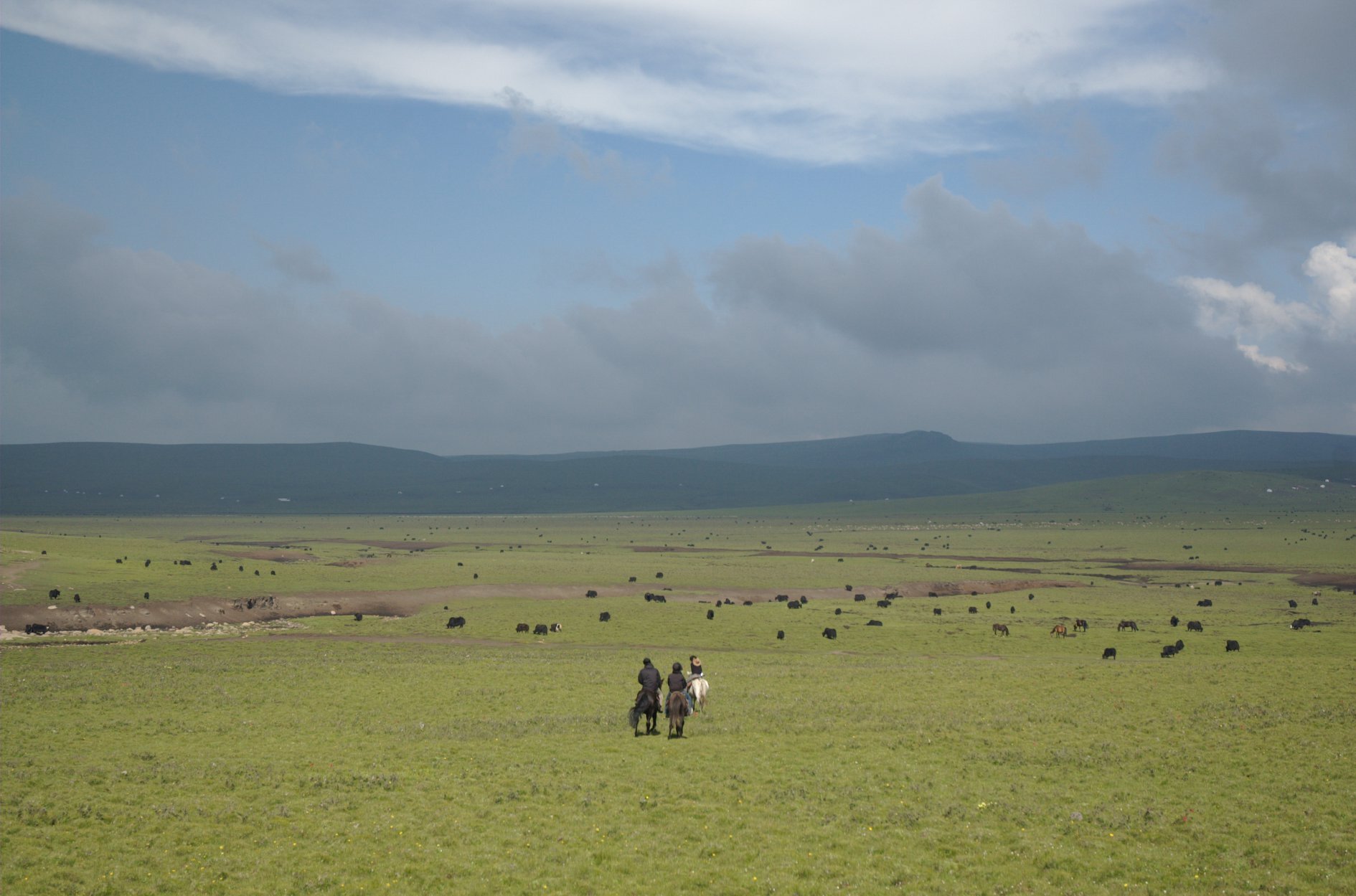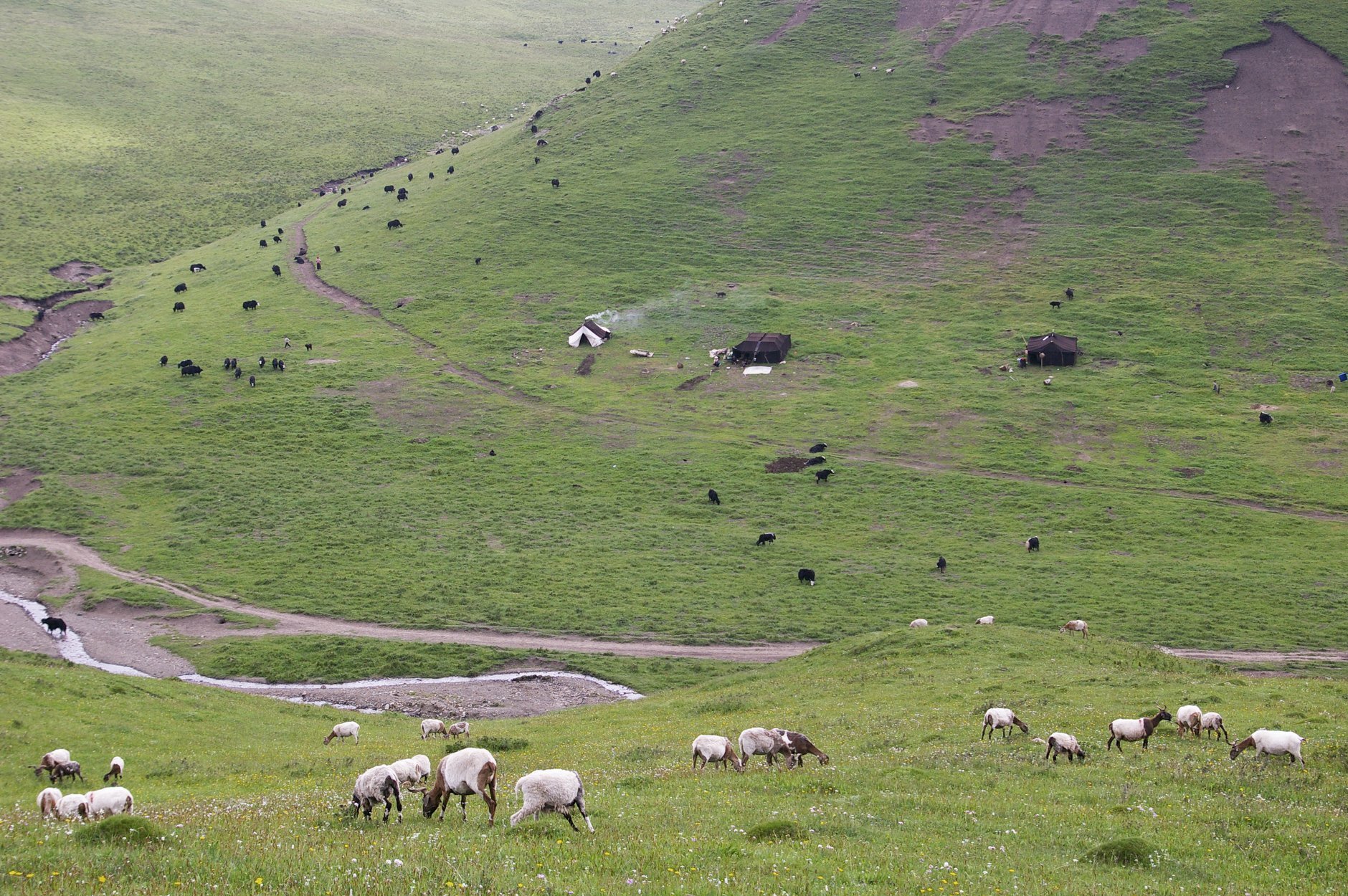Nomads on the Move
/There is evidence that the Tibetan Plateau has been the site of human activity for hundreds of thousands of years, beginning with groups of hunter-gatherers who followed herds of wild yaks and hunted them for sustenance. Gradually, they domesticated the yak and led the herds across the Plateau in patterns of seasonal migration.
Though the pasture may seem vast and empty, and today’s nomads are often perceived roaming freely, they have spent centuries carefully managing their resources, a complex and highly regulated lifestyle. For a nomad, satisfying the needs of their animals while preserving pasture for future use is a delicate balancing act. Each area, with its designated inhabitants, has a defined territory that the nomads manage in common. This takes a high level of coordination, with limits on grazing for areas in certain seasons to ensure sufficient grazing to satisfy everyone’s needs.
Nomads move pasture three to four times in a year. The number of animals grazing and the quality of the grass determines the length of their stay, and when they judge and the area has been sufficiently grazed, they pack up their tents and possessions and prepare the move. They used to load yaks but lately have mostly switched to three-wheelers called Blue Camels.
The same families move together, and the sites are pre-assigned by agreement. There are spring pastures, summer pastures, late summer, and fall pastures, depending on the area. They choose a sheltered area to establish camp, one close to a river or stream and build a mud-brick stove at the center of the tent. The families from one group erect their tents in proximity to one another and the chores are shared between the different family members.
Written by: Kim Yeshi






